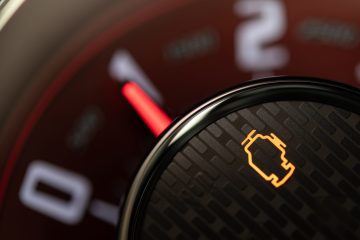As new research highlights the dangers of driving with worn tyres, the CEO of Halfords is calling for an urgent review of the tyre tread legal limit.
Conducted by the Director of the Centre for Automotive Industry Research at Cardiff University and commissioned by Halfords, the study shows that when driving on or under the tyre tread legal limit in the UK, the dangers posed could be more than those of drink driving. With tyre tread at 1.6mm, braking distances could increase by over a third compared to those running at 4mm or more.
Up to 35% of fatal road collisions are alcohol-related and research shows that driving under the influence increases reaction times and therefore stopping distance. However, the new research, which for the first time ever compared the impact of both worn tyres in wet, winter weather conditions and alcohol consumption on stopping distance, found that driving with worn tyres increases additional stopping distance seven times as much as being under the influence of alcohol does.

Graham Stapleton, CEO of Halfords believes that the study demonstrates that the current legal limit on tread is too low, with current regulations on tyre tread not having been updated since 1986 – something Professor Peter Wells, who led the study, agrees with.
Tyre tread legal limit not good enough
The in-depth study, which analysed a raft of evidence on the subject, found that on average, consuming alcohol increases reaction time by 18% or 120 milliseconds. At 70mph, this would lead to an increased stopping distance of 12.4 feet.
However, the difference in stopping distance between tyres in ‘good’ condition with 4mm of tread, and ‘worn’ condition with just 1.6mm tread (in the same wet, winter driving conditions) is a huge 36%, which equates to an additional 89ft.
More worryingly, the tyre tread legal limit in the UK is 1.6mm, meaning a car with this level of tread is technically legal and would pass an MOT. The research showed clearly that this impact increases steadily with speed.
Halfords and Professor Peter Wells conducted the research to raise awareness of the serious risks that worn tyres pose to motorists at Christmas time, when road conditions can be at their most treacherous due to rain, snow and ice, and more of us are on the roads.
The recent cold spell in the UK has only highlighted further the need for tyres in good condition, with tread that can cope as roads become dangerous. The tyre tread legal limit of 1.6mm, especially when measured, seems woefully small.
Tyres leading cause of MOT failure
However, it seems not many drivers are keeping an eye on their tyre tread. Halfords saw in excess of 100,000 motorists receive a warning for being on or near the tyre tread legal limit of 1.6mm last year, through an advisory on their MOT. This means many drivers are driving vehicles legally, but with tyres that could easily breach the legal limit before their next annual test.
“We need to get a grip on tyre safety. The tyre tread legal limit is too low, and it is putting millions of motorists at risk,” said Graham Stapleton, CEO of Halfords. “Every year we advise huge numbers of UK motorists that their tyres are dangerously low on tread, but unfortunately many drive away assuming that, if they are legal, they must be fine.
“But the reality is that their safety is already significantly compromised, and this will only increase as they experience more wear. Any tyres that receive a warning are likely to be illegal with just a few thousand more miles of motoring. A tyre with just 1.6mm of tread could be one small lock up or pothole away from being illegal and this could even happen on the way back from the test centre, but the tyres may not be checked again until their next MOT. This study clearly demonstrates that current tread limits are just too low given how much grip is reduced, even when within legal limits.”
The study found that it is not just braking distances that are impacted by worn tyres. “Braking distances are an indicator of general levels of grip,” stated Wells. “So, if worn tyres increase braking distances by a third, we can reasonably assume that general levels of grip in the tyres are reduced by this amount too. Therefore, those on or below the tyre tread legal limit will also have a significant impact on car control on the road in other situations, such as cornering. This means it is more likely that you’ll lose control of the car in the first place if you have worn tyres.”
Speaking about the study, in general, Wells continued: “When we began the research, we didn’t know which of the two factors – alcohol or worn tyres – would have the largest impact on stopping distance as the data have never been compared before. To demonstrate that worn tyres increase stopping distance seven times more than alcohol is a significant finding. The research also highlights how dangerous supposedly legal tyres are when it comes to grip levels. In my opinion the current tyre tread legal limit is too low.”




You must be logged in to post a comment.